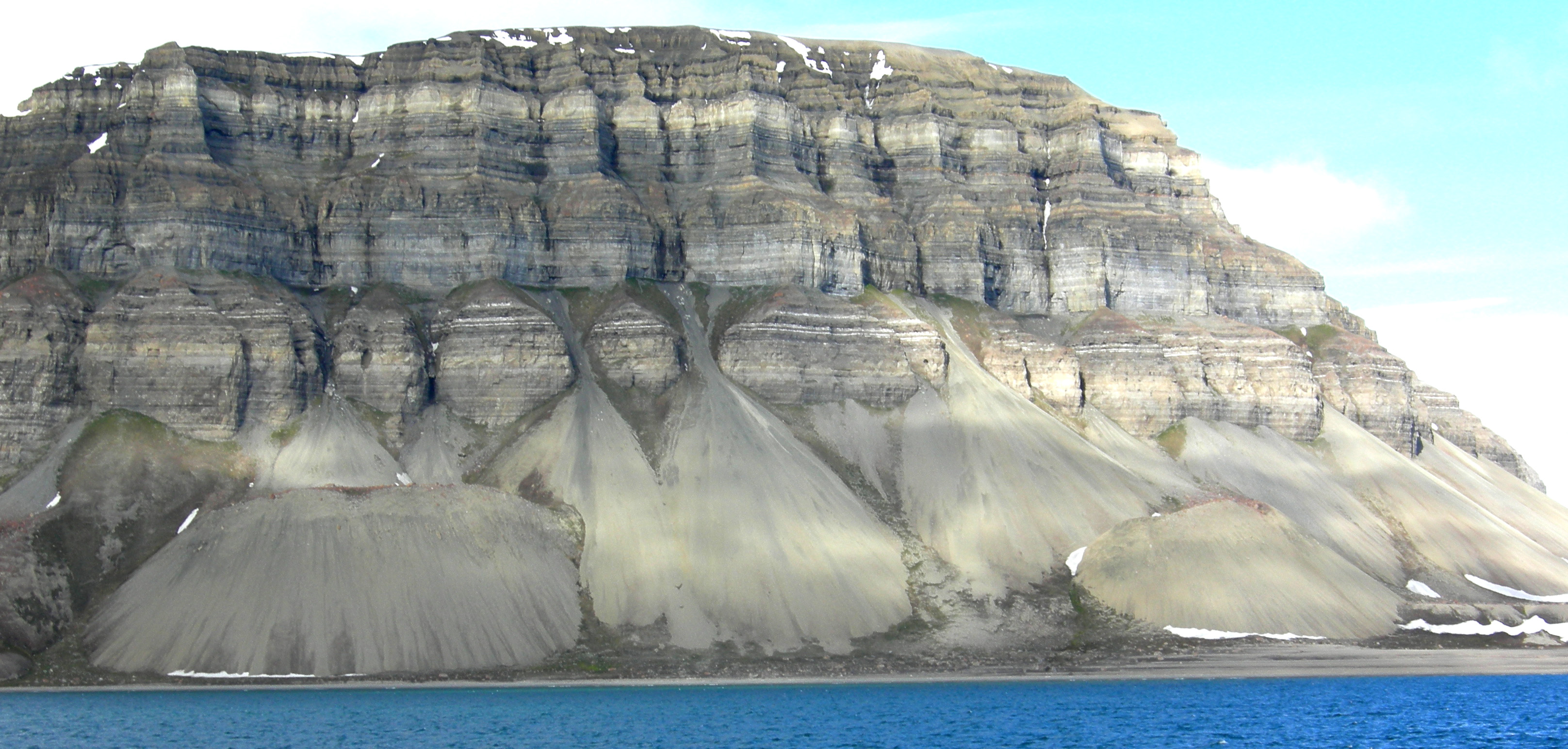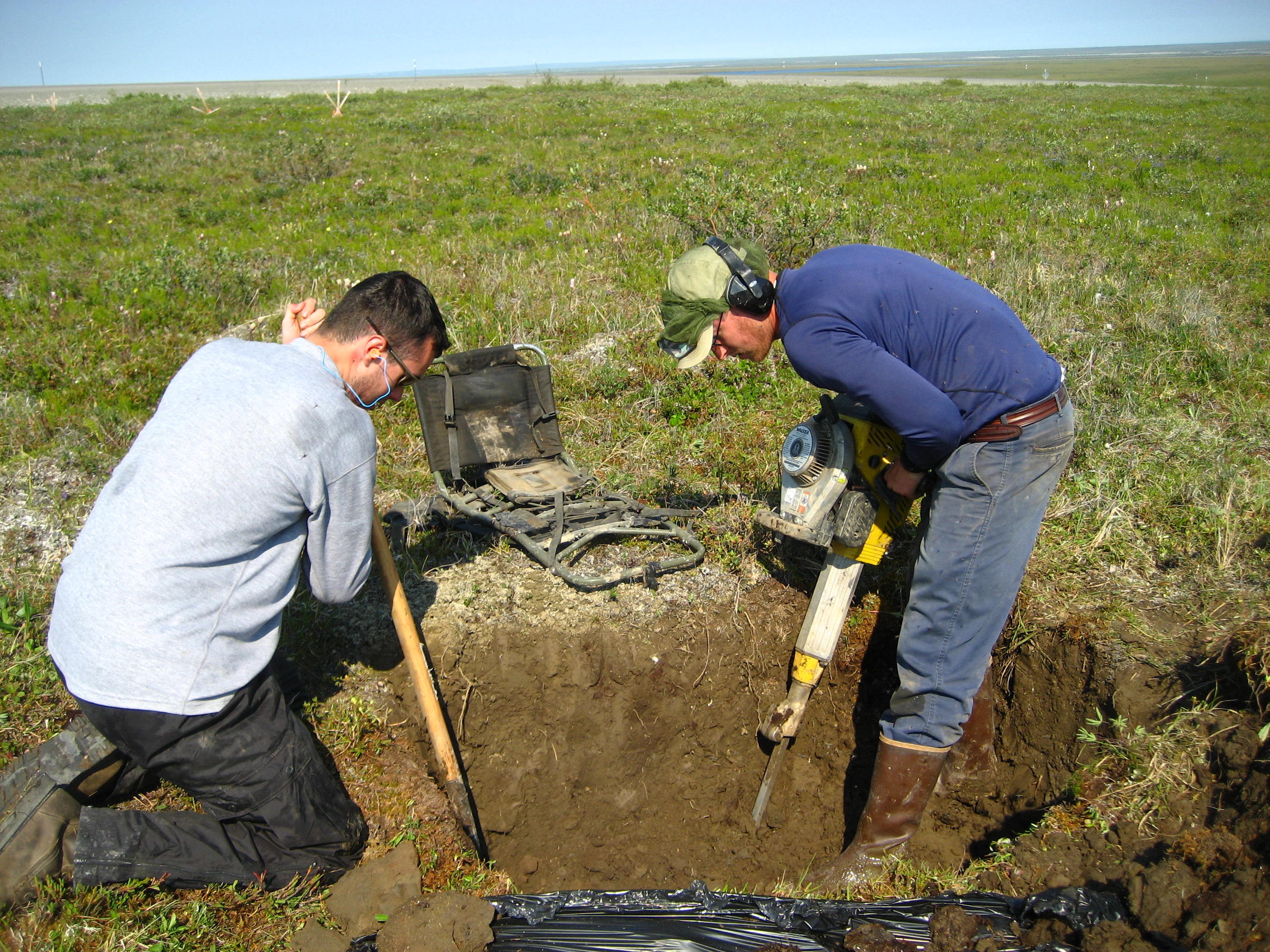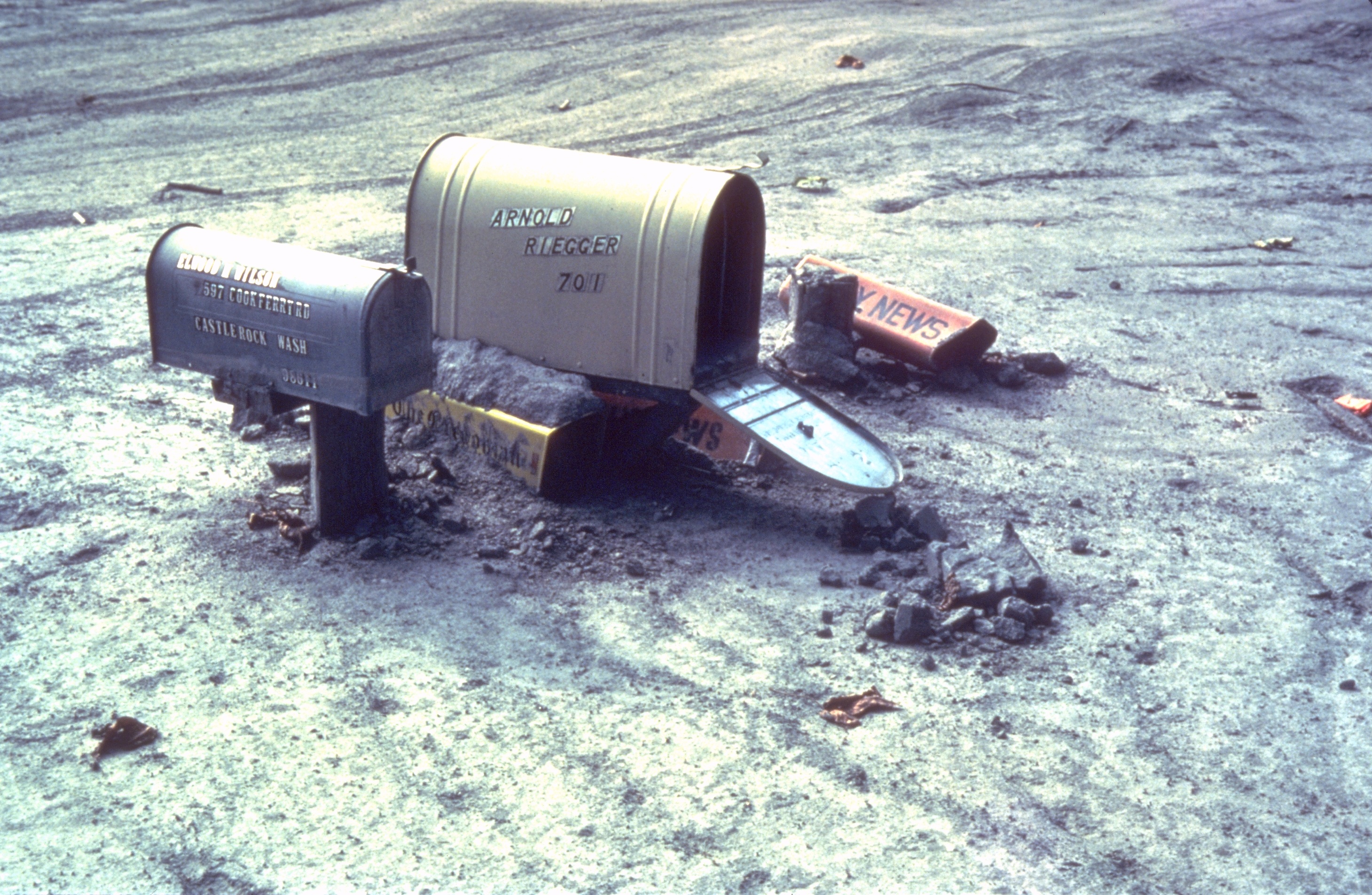|
Mass Movement (geology)
Mass wasting, also known as mass movement, is a general term for the movement of rock or soil down slopes under the force of gravity. It differs from other processes of erosion in that the debris transported by mass wasting is not entrained in a moving medium, such as water, wind, or ice. Types of mass wasting include creep, solifluction, rockfalls, debris flows, and landslides, each with its own characteristic features, and taking place over timescales from seconds to hundreds of years. Mass wasting occurs on both terrestrial and submarine slopes, and has been observed on Earth, Mars, Venus, Jupiter's moon Io, and on many other bodies in the Solar System. Subsidence is sometimes regarded as a form of mass wasting. A distinction is then made between mass wasting by subsidence, which involves little horizontal movement, and mass wasting by slope movement. Rapid mass wasting events, such as landslides, can be deadly and destructive. More gradual mass wasting, such as soil creep ... [...More Info...] [...Related Items...] OR: [Wikipedia] [Google] [Baidu] |
Solar System
The Solar SystemCapitalization of the name varies. The International Astronomical Union, the authoritative body regarding astronomical nomenclature, specifies capitalizing the names of all individual astronomical objects but uses mixed "Solar System" and "solar system" structures in theinaming guidelines document. The name is commonly rendered in lower case ('solar system'), as, for example, in the ''Oxford English Dictionary'' an''Merriam-Webster's 11th Collegiate Dictionary''. is the gravitationally bound Planetary system, system of the Sun and the objects that orbit it. It Formation and evolution of the Solar System, formed about 4.6 billion years ago when a dense region of a molecular cloud collapsed, forming the Sun and a protoplanetary disc. The Sun is a typical star that maintains a hydrostatic equilibrium, balanced equilibrium by the thermonuclear fusion, fusion of hydrogen into helium at its stellar core, core, releasing this energy from its outer photosphere. As ... [...More Info...] [...Related Items...] OR: [Wikipedia] [Google] [Baidu] |
Thistle 2010 From US6 Rest Area
Thistle is the common name of a group of flowering plants characterized by leaves with sharp spikes on the margins, mostly in the family Asteraceae. Prickles can also occur all over the planton the stem and on the flat parts of the leaves. These prickles protect the plant from herbivores. Typically, an involucre with a clasping shape similar to a cup or urn subtends each of a thistle's flower heads. The typically feathery pappus of a ripe thistle flower is known as thistle-down. The spininess varies considerably by species. For example, ''Cirsium heterophyllum'' has very soft spines while ''Cirsium spinosissimum'' is the opposite. Typically, species adapted to dry environments are more spiny. The term thistle is sometimes taken to mean precisely those plants in the tribe Cardueae (synonym: Cynareae), especially the genera ''Carduus'', ''Cirsium'', and ''Onopordum''. However, plants outside this tribe are sometimes also called thistles. Biennial thistles are particularly n ... [...More Info...] [...Related Items...] OR: [Wikipedia] [Google] [Baidu] |
Stone Rivers
A stone run (called also ''stone river'', ''stone stream'' or ''stone sea''Vitosha Nature Park: Basic Information. Landscape. Vitosha Nature Park website.) is a rock landform resulting from the of particular rock varieties caused by freezing-thawing cycles in conditions during the last Ice Age. The actual formation of stone runs involved five processes: |
Weathering
Weathering is the deterioration of rocks, soils and minerals (as well as wood and artificial materials) through contact with water, atmospheric gases, sunlight, and biological organisms. It occurs '' in situ'' (on-site, with little or no movement), and so is distinct from erosion, which involves the transport of rocks and minerals by agents such as water, ice, snow, wind, waves and gravity. Weathering processes are either physical or chemical. The former involves the breakdown of rocks and soils through such mechanical effects as heat, water, ice and wind. The latter covers reactions to water, atmospheric gases and biologically produced chemicals with rocks and soils. Water is the principal agent behind both kinds, though atmospheric oxygen and carbon dioxide and the activities of biological organisms are also important. Biological chemical weathering is also called biological weathering. The materials left after the rock breaks down combine with organic material to create so ... [...More Info...] [...Related Items...] OR: [Wikipedia] [Google] [Baidu] |
Permafrost
Permafrost () is soil or underwater sediment which continuously remains below for two years or more; the oldest permafrost has been continuously frozen for around 700,000 years. Whilst the shallowest permafrost has a vertical extent of below a meter (3 ft), the deepest is greater than . Similarly, the area of individual permafrost zones may be limited to narrow mountain summits or extend across vast Arctic regions. The ground beneath glaciers and ice sheets is not usually defined as permafrost, so on land, permafrost is generally located beneath a so-called active layer of soil which freezes and thaws depending on the season. Around 15% of the Northern Hemisphere or 11% of the global surface is underlain by permafrost, covering a total area of around . This includes large areas of Alaska, Canada, Greenland, and Siberia. It is also located in high mountain regions, with the Tibetan Plateau being a prominent example. Only a minority of permafrost exists in the Southern Hemi ... [...More Info...] [...Related Items...] OR: [Wikipedia] [Google] [Baidu] |
Sloughing (soil)
Soil sloughing is soil falling off banks and slopes due to a loss in cohesion. Soil sloughs off for the same reasons as landslides in general, with very wet soil being among the leading factors. Sloughing is a relatively shallow phenomenon involving the uppermost layers of the soil. Bare soils are more likely to slough than soils with plant cover in part because the roots help hold the surface against gravity. Unabated soil sloughing can end in massive bank or slope failure. Impact on soil quality According to the Mohr-Coulomb equation, the cohesion of a soil is defined as the shear strength at zero normal pressure on the surface of failure. The shear force is a function of cohesion, normal stress on rupture surface, and angle of internal friction. Shear force is significantly impacted by drainage conditions. Increasing water content would lead to a weaker shear strength, which in turn decreases the cohesion. Moreover, when the soil water content passes a threshold value, the ... [...More Info...] [...Related Items...] OR: [Wikipedia] [Google] [Baidu] |
Terracette
A terracette is a landform consisting of a hillside ridge arranged as part of sub-parallel "step-like sequences" of such ridges. Terracette occur on steep hillsides and are regularly spaced. Various causes have been suggested to explain their origin including: animal trampling, vegetation and regolith behaviour, soil creep and solifluction including gelifluction. One explanation holds that terracettes are formed when saturated soil particles expand, then contract as they dry, causing them to move slowly downhill. An example of this is the manger near the Uffington White Horse. It may also be described as a small, irregular step-like formation on steep hillslopes, especially on those used for pasture which are formed by soil creep or erosion of surface soils exacerbated by the trampling of livestock such as sheep or cattle. Synonyms are: catstep cattle terracing, sheep or cattle track. Early investigators such as C. Darwin (1904) believed that animals grazing the hillsides caused ... [...More Info...] [...Related Items...] OR: [Wikipedia] [Google] [Baidu] |
Grand Mesa Creep
Grand may refer to: People with the name * Grand (surname) * Grand L. Bush (born 1955), American actor Places * Grand, Oklahoma, USA * Grand, Vosges, village and commune in France with Gallo-Roman amphitheatre * Grand County (other), several places * Grand Geyser, Upper Geyser Basin of Yellowstone, USA * Le Grand, California, USA; census-designated place * Mount Grand, Brockville, New Zealand Arts, entertainment, and media * ''Grand'' (Erin McKeown album), 2003 * "Grand" (Kane Brown song), 2022 * ''Grand'' (Matt and Kim album), 2009 * ''Grand'' (magazine), a lifestyle magazine related to related to grandparents * ''Grand'' (TV series), American sitcom, 1990 * Grand Production, Serbian record label company Other uses * Great Recycling and Northern Development Canal, also known as GRAND Canal * Grand (slang), one thousand units of currency * Giant Radio Array for Neutrino Detection, also known as GRAND See also * * * Grand Hotel (other) * Grand statio ... [...More Info...] [...Related Items...] OR: [Wikipedia] [Google] [Baidu] |
Stream
A stream is a continuous body of water, body of surface water Current (stream), flowing within the stream bed, bed and bank (geography), banks of a channel (geography), channel. Depending on its location or certain characteristics, a stream may be referred to by a variety of local or regional names. Long, large streams are usually called rivers, while smaller, less voluminous and more intermittent river, intermittent streams are known, amongst others, as brook, creek, rivulet, rill, run, tributary, feeder, freshet, narrow river, and streamlet. The flow of a stream is controlled by three inputs – surface runoff (from precipitation or meltwater), daylighting (streams), daylighted subterranean river, subterranean water, and surfaced groundwater (Spring (hydrology), spring water). The surface and subterranean water are highly variable between periods of rainfall. Groundwater, on the other hand, has a relatively constant input and is controlled more by long-term patterns of pr ... [...More Info...] [...Related Items...] OR: [Wikipedia] [Google] [Baidu] |
Mudflow
A mudflow, also known as mudslide or mud flow, is a form of mass wasting involving fast-moving flow of debris and dirt that has become liquified by the addition of water. Such flows can move at speeds ranging from 3 meters/minute to 5 meters/second. Mudflows contain a significant proportion of clay, which makes them more fluid than debris flows, allowing them to travel farther and across lower slope angles. Both types of flow are generally mixtures of particles with a wide range of sizes, which typically become sorted by size upon deposition. Mudflows are often called mudslips, a term applied indiscriminately by the mass media to a variety of mass wasting events. Mudflows often start as slides, becoming flows as water is entrained along the flow path; such events are often called mud failures. Other types of mudflows include lahars (involving fine-grained pyroclastic deposits on the flanks of volcanoes) and jökulhlaups (outbursts from under glaciers or icecaps). A statutory ... [...More Info...] [...Related Items...] OR: [Wikipedia] [Google] [Baidu] |
Afforestation
Afforestation is the establishment of a forest or stand of trees in an area where there was no recent tree cover. There are three types of afforestation: natural Regeneration (biology), regeneration, agroforestry and Tree plantation, tree plantations. Afforestation has many benefits. In the context of climate change, afforestation can be helpful for climate change mitigation through the route of carbon sequestration. Afforestation can also improve the local climate through increased rainfall and by being a barrier against high winds. The additional trees can also prevent or reduce topsoil erosion (from water and wind), floods and landslides. Finally, additional trees can be a habitat for wildlife, and provide employment and wood products. In comparison, reforestation means re-establishing forest that have either been cut down or lost due to natural causes, such as fire, storm, etc. Nowadays, the boundaries between afforestation and reforestation projects can be blurred as it ma ... [...More Info...] [...Related Items...] OR: [Wikipedia] [Google] [Baidu] |






